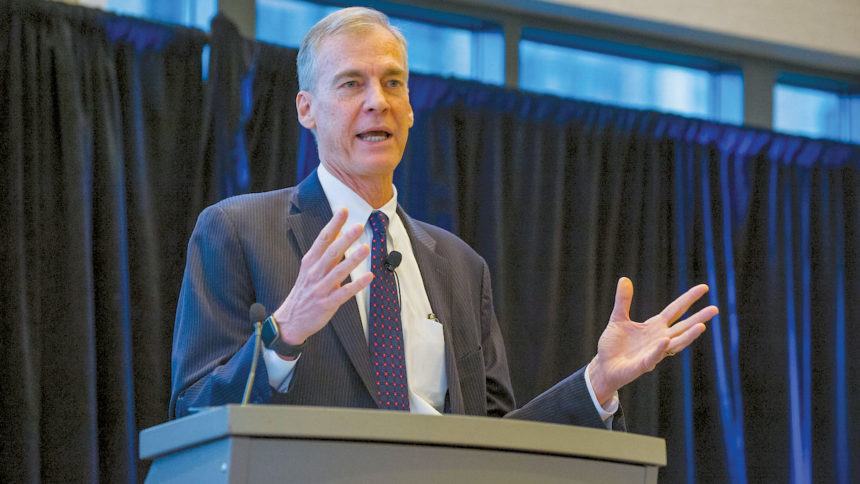
Long-term care operators will have to rebuild occupancy by at least 1% per month for the next year for the industry to restore pre-pandemic census levels and financially recover from the public health crisis, according to the leader of the nation’s largest nursing home association.
“If census doesn’t recover at all, or recover slower than that, the sector has a real problem,” said Mark Parkinson, president and CEO of the American Health Care Association/National Center for Assisted Living.
Nationwide census before the pandemic was reported at about 80% and immediately after the COVID-19 public health crisis hit, it dipped to about 72% by June, Parkinson explained. He added that the industry stayed at that level for the next several months — only sliding to 71% by November — but then “the third wave of COVID hit.”
“In three short months, we’ve gone from 71% to 67%,” Parkinson noted. “We start our recovery down 13%. That’s tough. That’s an unprecedented low.”
Parkinson’s comments came during an online Q&A session with health consulting firm Synchrony Health Services late last week. He said that his hope is for the industry to get past early March, when he estimated vaccinations will be complete in long-term care, and census will start to rebound.
“We need it to recover at a pace of about 1% per month and that doesn’t sound like very much but it’s not as easy as it may seem,” he said. If that goal is met through the rest of the year, “we’ll be in pretty good shape.”
He added that last summer after COVID rates started to decline, census started to recover in some markets. That gives him hope that the same can happen after this current wave ends and the vaccination process is completed.
Parkinson also praised overall vaccine distribution, and the successes that independent long-term care pharmacies have had administering vaccines.
He said that while providers are “definitely approaching the tail end” of the clinical nightmare caused by COVID, the financial nightmare is still prevalent.
On Tuesday, AHCA/NCAL emphasized to McKnight’s Long-Term Care News that additional federal relief is still needed. The group is lobbying for an additional $100 billion to the Provider Relief Fund, in order to help providers with the ongoing costs of fighting the virus.
“Occupancy has been at record lows due to fewer new patients from the hospital and fewer new residents seeking long-term care,” the group said in a statement. “Long-term care is facing the worst economic crisis in its history because of the pandemic, and hundreds of facilities may have to close their doors in 2021, leaving vulnerable residents without the care they need.”




